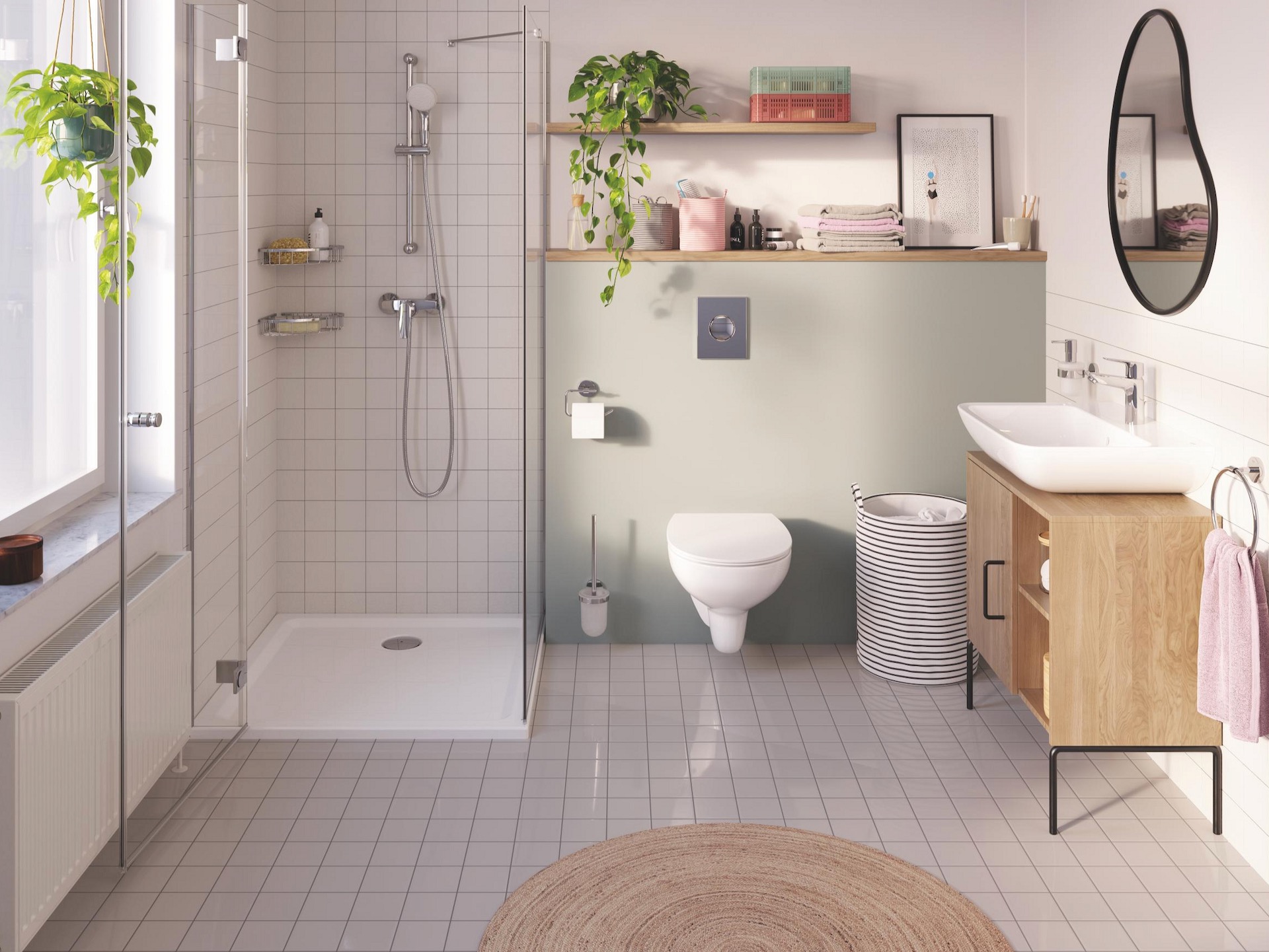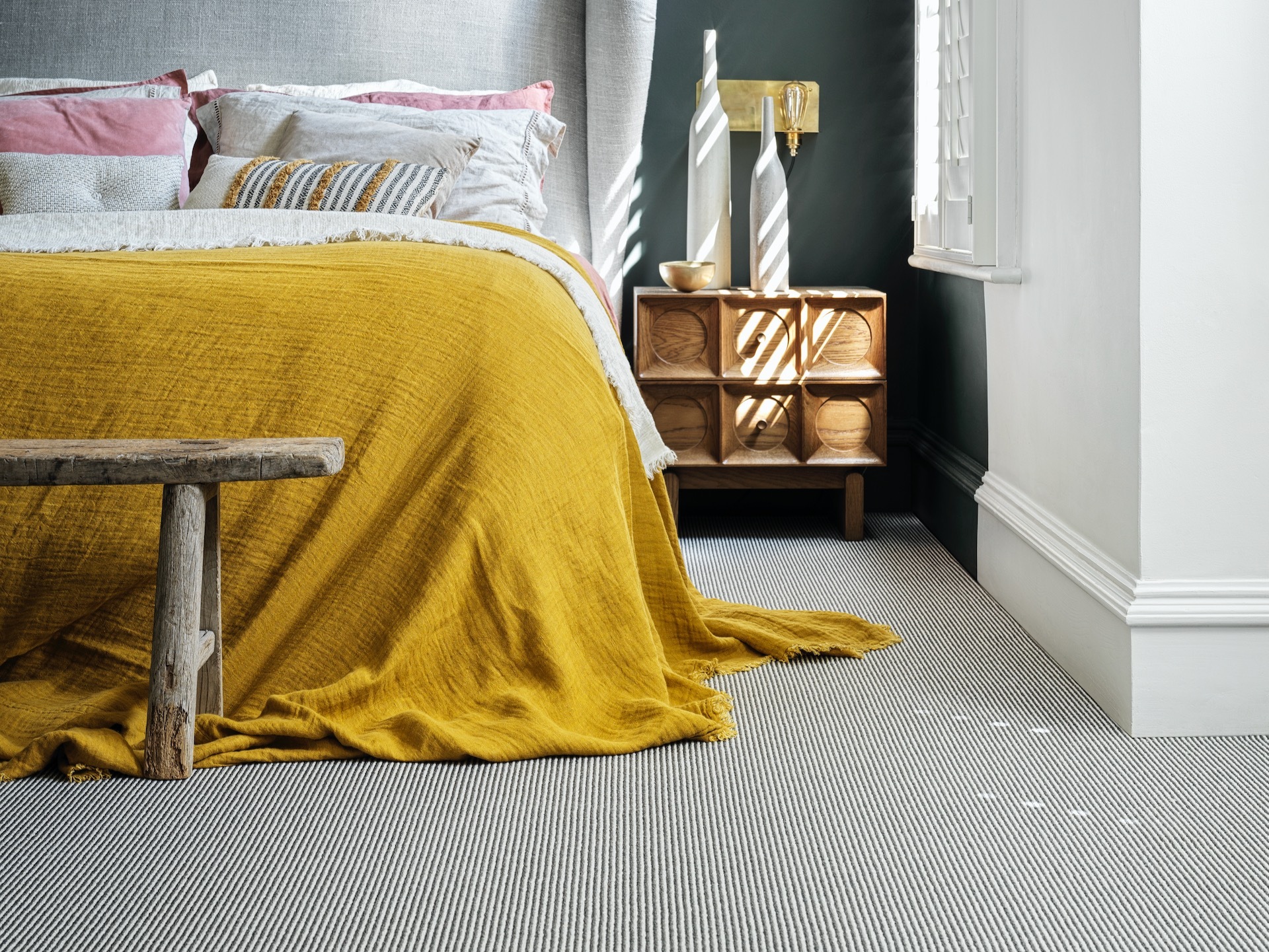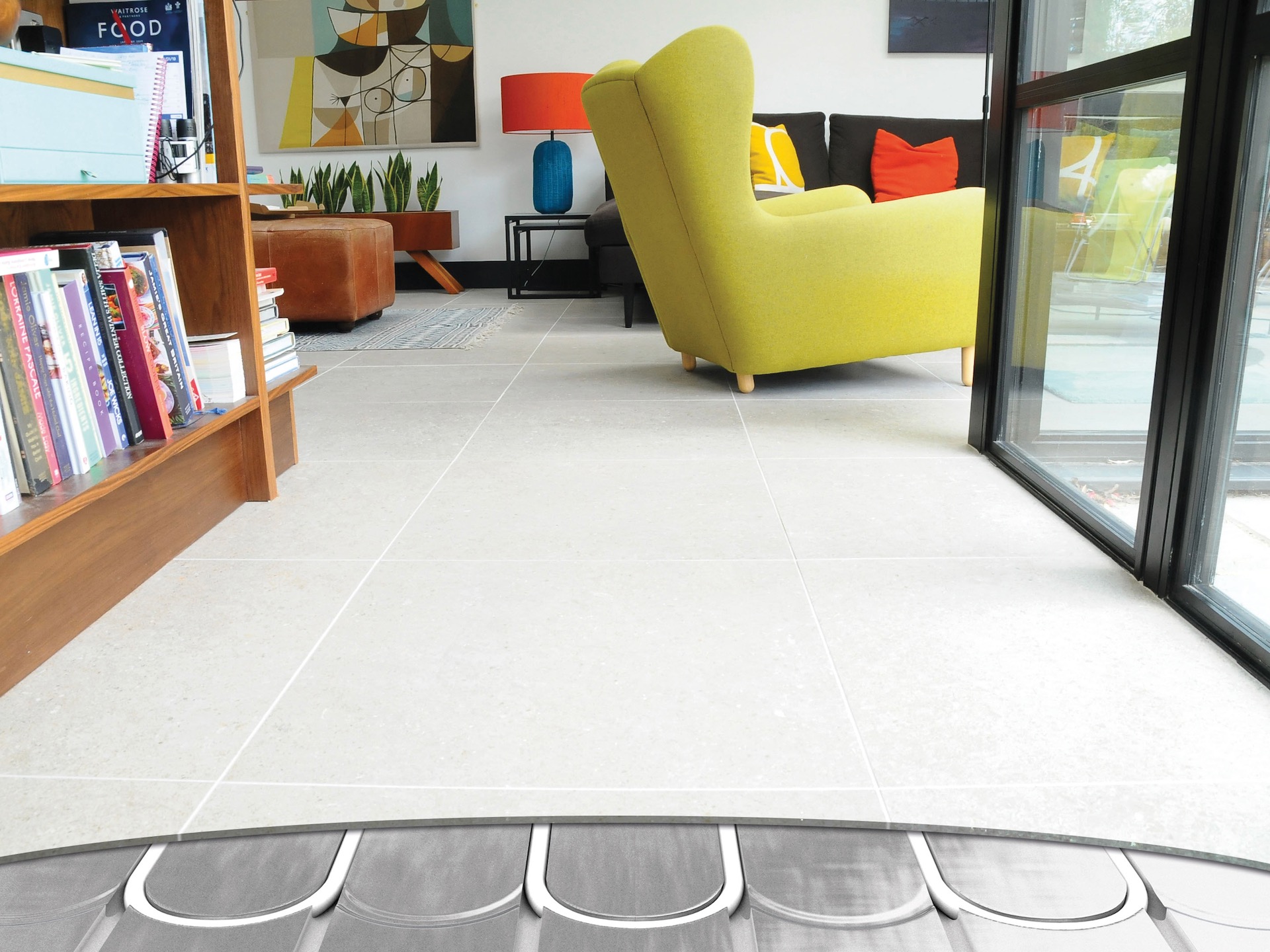Is underfloor heating expensive? 6 myths debunked
Have you been considering underfloor heating but been put off by stories of disruptive installs, rooms that take an age to heat up or astronomical costs? There are plenty of underfloor heating myths out there – and some hard truths, too.
Underfloor heating (UFH) systems have come a long way since they first appeared on the UK domestic scene in the late 1980s. This heating technology radiates heat from the floor up, meaning there is less chance of cold spots or draughts – yet people still view it as a problematic option. To clear things up, we’ve spoken to some experts in the field to try and separate the fact from the fiction.
1. Underfloor heating is disruptive to install
That can be the case – but it depends on the system you fit. There are now electric and innovative water-based options that won’t require you to dig up the entire floor.
“Retrofitting underfloor heating can prove troublesome, but particularly so with traditional water-based underfloor heating systems,” John Klee, heating trends analyst at Best Heating. “The floor will need to be raised or entirely pulled up, and it could take several days or weeks for the installation to be completed. Wet UFH relies on water travelling in between pipework and the boiler or central heating system, so it can be a disruptive and invasive procedure to ensure everything is running smoothly.”
“Electric underfloor heating fittings are a lot less troublesome, given that no pipework is involved,” he adds. “The floor will likely still need to be raised in the case of retrofit installations, but the pre-wired mats can be rolled out across your chosen area and trimmed down to suit in a much quicker process than with water-based applications. An easier installation practice means a lower outlay as well.”

Underfloor heating can make the coldest bathroom floor toasty to the touch. Image credit: Grohe
Rapid response underfloor heating: the best of both worlds?
There is a downside to electric UFH – while it is cheap to buy and install, it can be very expensive to run. Even if you are generating your own electricity, via solar panels, it can be very thirsty for power compared to water-based systems.
But Tom Edmunds, general manager at underfloor heating provider Wunda Group, has a third option, which he claims can be fitted over a long weekend. Wunda’s UFH system is water-based, but offers the convenience of electric UFH in that it can be laid over existing flooring.
“Essentially, you just clear the room, stick our boards to the existing floor, run the pipe back and forth and put a new floor on top,” says Tom. “You then need a professional to come in and connect the pipework to your existing heating supply, be that a boiler, heat pump or solar system. But that won’t be a big job – it can be done in a day.”
“If you’re confident putting up flatpack furniture, it’s just as easy – if not easier,” explains Wunda product manager Sam Jump. “You’re just cutting high-density polystyrene panels to sizes that we specify according to the plans you’ve provided, sticking them onto the floor with a specialist glue that we provide, then walking the pipe back and forth into the precut grooves.
“If you can lay laminate flooring, you can lay our heating system,” Tom adds.
2. It’s expensive
According to Checkatrade, underfloor heating installation and materials from a professional can cost anywhere between £500 to £8,000 – the top price applying to retrofitting a wet system as part of a renovation project. But again, advances in technology are bringing that price down, turning high costs into another underfloor heating myth.
“People tend to think underfloor heating is the preserve of the rich,” says Sam Jump. “But it’s really not. Our current system is currently on offer at £37-£39 per sq m. That means that installing underfloor heating across the ground floor of a three- to four-bedroom house, with a floor area of 55 sq m, would cost in the region £1,800 to £2,500.”
3. It’s hard to control

Smart controls can be used to set the temperature and turn underfloor heating on and off from your phone. Image credit: Wunda Group
A common complaint of traditional UFH is that it can make a room unbearably hot – or take an age to heat up when it’s cold. But modern zoned water and electric systems that are close to the surface of your floor have a far more rapid response. “Our system will warm up a whole room from cold in 20 to 40 minutes,” says Sam Jump.
“We also have our own smart control system so that zones can be set to come on at different times and different temperatures – and this can all be done from your phone,” adds Tom Edmunds.
4. It’s not compatible with my heating system
Whether you are considering water-based or electric underfloor heating, there should be a way to connect it to your heating system of choice.
“In theory, both types of underfloor heating can work with any sort of renewable energy source,” says John. “So if you use solar panels, wind turbines, or ground- or air-source heat pumps, for example, to garner energy for the home, these can be used to deliver the necessary power to your underfloor heating setup. The use of these heat sources will greatly reduce your household’s carbon footprint, too.”
The other good news is that underfloor heating is cheaper to run than other water-based systems. “Water-based UFH is far and away the most efficient heating system you can get,” says Sam Jump. “That’s because it runs on very, very low water temperatures. Whereas radiators are using 70-80°C water in the UK, commonly, water-based UFH systems use water at between 29°C and 45°C.
“I live in a 1980s brick house with cavity walls and chipboard-suspended floors so there’s no insulation underneath them, but I’m currently heating my house with water that’s running at 40°C through the manifold,” says Tom. “To put that in context, if you’ve ever been in a hot tub, they run at 36-37 degrees. Anything hotter than that, you’d get in, and that would be too much.”
5. UFH only works with certain types of flooring

For an ultra-cosy floor, choose a carpet that’s compatible with underfloor heating, such as this Pampas Nordic Stripe (Faroe) carpet, from £28.50 per sq m, Kersaint Cobb
Underfloor heating is often associated with warming up cold porcelain tiles. But it works with almost any flooring, including natural stone, wood, vinyl, laminate and even carpet. There are very few exceptions, according to Sam Jump at Wunda. “There are just two types of wood – maple and beech – that are unsuitable for use with underfloor heating due to their high water content. Though they are rarely used for flooring in any case,” he says. “The other is carpet over 2.5 togs.”
“Carpet and UFH’s can be complementary products as long as you follow the manufacturers’ guidelines for installation. Especially the tog rating of both the carpet and underlay,” adds Jon Flannigan, product manager at Kersaint Cobb. “Natural fibres in wool carpet mean the UFH system may take a little longer to heat the room. However, the naturally insulating nature of the fabric also means it will retain heat for longer.
“As a rule of thumb, the combined tog rating of the underlay and carpet should be no more than 2.5 togs,’ Jon explains. “Tog ratings are important as the UFH needs to be able to radiate the heat through the flooring covering. Consider an underlay with no more than 0.8 togs to allow the heat to transfer from the subfloor with ease. This allows you to focus on the carpet providing comfort and style to your home.”
6. It’s going to leak
Our next underfloor heating myth? That with all those pipes running beneath your floor, there’s a big danger they could leak and flood your home. “The biggest question we get asked,” adds Tom, “is ‘what if the underfloor system leaks?’ But there are no joins under the floor. It’s one continuous pipe.” That makes it extremely unlikely to leak unless it’s damaged during the installation.
Another underfloor heating supplier, Warmup, states that leaks are ‘highly unlikely’. The most common cause would be if you were to drill into your floor and hit the pipe. In which case the pipe can be replaced, but you will have to raise your entire floor to do this.
“A water-based system is super-reliable,” says Sam Jump. “And here’s nowhere near as much maintenance as there would be for radiators, which need bleeding. The only maintenance that needs to be done – if you turn your heating off for summer and want to turn it back on in winter – is to purge the system of any potential air blocks. This can be done from one central manifold. You don’t have to run around the house as you would do with radiators.”









